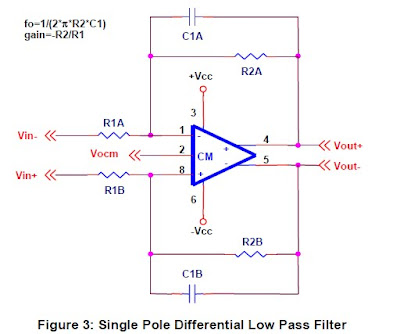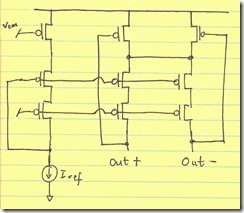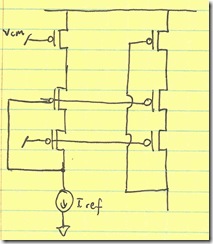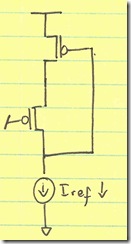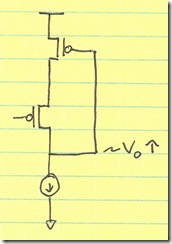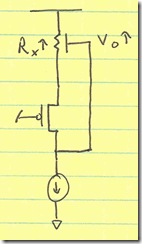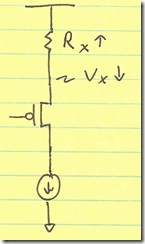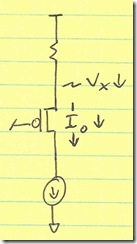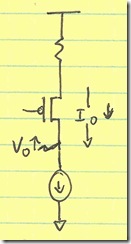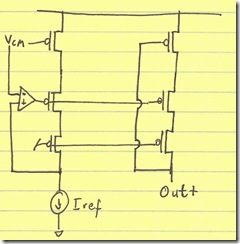1 Introduction
Fully differential op amps may be intimidating to some designers, But op amps began as fully differential components over 50 years ago. Techniques about how to use the fully differential versions have been almost lost over the decades. However, today’s fully differential op amps offer performance advantages unheard of in those first units.
This report does not attempt a detailed analysis of op amp theory; reference 1 covers theory well. Instead, this report presents just the facts a designer needs to get started, and some resources for further design assistance. After reading this document, a designer can approach a fully differential op amp design with confidence.
2 What Does Fully Differential Mean?
Single-ended op amps have two inputs—a positive and negative input—which are understood to be fully differential. They have a single output, which is referenced to system ground.
The op amp has two power supply inputs, which are connected to bipolar power supplies (equal and opposite positive and negative potentials), or a single potential, with a positive supply and a ground connected to the power supply pins. These power supply pins are often omitted from the schematic symbol, when power supply connections are implied elsewhere on the schematic.
Fully differential op amps add a second output:
The output is fully differential—the two outputs are called positive output and negative output—similar terminology to the two inputs. Like the inputs, they are differential. The output voltages are equal, but opposite in polarity (referenced to the common-mode operating point of the circuit).
3 How Is the Second Output Used?
An op amp is used as a closed-loop device. Most designers know how to close the loop on a single-ended op amp:
Whether the single ended op amp is used in an inverting or a noninverting mode, the loop is closed from the output to the inverting input.
3.1 Differential Gain Stages
So, how is the loop closed on a fully differential op amp? If there are two outputs, both of them have to be operated closed loop. Therefore, the equivalent way of closing the loop on a fully differential op amp is:
Two identical feedback loops are required to close the loops for a fully differential op amp. If the loops are not matched, there can be significant second order harmonic distortion. For a fully differential op amp, each feedback loop is an inverting feedback loop. Both polarities of output are available, so terms like inverting and noninverting are meaningless. Instead, think of the single-ended schematics in Figure 3. In both cases, the loop goes from the noninverting output to the inverting input, introducing a 180° phase shift. For the fully differential op amp, the top feedback loop has a 180° phase shift from the noninverting output to the inverting input, and the bottom feedback loop has a 180° phase shift from the inverting output to the noninverting input. Both feedback paths are therefore inverting. There is no noninverting fully differential op amp gain circuit.
The gain of the differential stage is:
3.2 Single-Ended to Differential Conversion
The schematic shown in Figure 4 is a fully differential gain circuit. Fully differential applications, however, are somewhat limited. Very often the fully differential op amp is used to convert a single-ended signal to a differential signal—perhaps to connect to the differential input of an A/D converter.
The two configurations shown in Figure 5 are equivalent. At first glance, they look identical, but they are not. The difference is that in the left configuration, the inverting input is used for signal and the noninverting input for reference. In the right configuration, the noninverting input is used for signal and the inverting input for reference. Either one works.
The gain of the single-ended to differential stage is:
The only difference between this configuration and the previous is that one side of the input voltage is referenced to ground.
The dynamics of the gain are sometimes best described pictorially. Figure 6 shows the relationship between Vin, Vout+, and Vout–.
4 A New Function
Texas Instruments fully differential op amps have an additional pin, Vocm, which stands for common-mode output voltage (level). The function of this pin can be either an input or an output, because its source is just a voltage divider off the power supply, but it is seldom used as an output. When it is used as an output, it corresponds to the common-mode voltage about which the Vout+ and Vout– outputs swing.
The most common use of the Vocm pin is to set the output common-mode level of the fully differential op amp. This is a very useful function, because it can be used to match the common mode point of a data converter to which the fully differential amplifier is connected. Highprecision/ high-speed data converters often employ differential inputs and provide a reference output.
The schematic of Figure 8 is simplified, and does not show compensation, termination, or decoupling components for clarity. Nevertheless, it shows the basic concept.
There are misconceptions associated with the Vocm pin:
* Misconception 1: The Vocm pin can be used as a third input. The Vocm pin is not a third signal input. Texas Instruments continually receives requests to know the bandwidth of the Vocm input. This is not the intended use. The intended use of the Vocm pin is to allow an external voltage to set the common-mode point of the output of the fully differential op amp
* Misconception 2: The Vocm pin can be used to set the dc operating point. Texas Instruments receives many customer inquiries about single supply operation of fully differential op amps, where the customer is attempting to use the Vocm pin to set the half supply reference. This invariably causes the circuit to draw excess current, and it can violate the input common mode range of the device. Proper dc operating point must be set with conventional op amp design techniques. Reference 2 describes the proper way to set the dc operating point of fully differential op amps.
* Misconception 3: The Vocm voltage level, reflected at the output, is affected by the stage gain. The common-mode output voltage is not affected by the values of Rf and Rg. The actual relation governing Vocm is:
The designer can think of Vocm in this way: as Vocm is shifted from zero to higher values, the dc portion of Vout+ and Vout– shifts by the same amount. The differential voltage between the two outputs, however, remains constant—determined by the values of Rf and Rg.
The value of Vocm affects the maximum output voltage swing. The maximum output voltag swing happens when Vocm is at zero. Adding 1 Vdc to Vocm decreases the output voltage swing range by one volt. For example, the voltage swing range for THS4131 is 3.7 V, –4.3 V when the supply voltage is ±5 V. This means that the output signal may reach 1.3 V below the upper rail
and 0.7 V above the negative rail.
and 0.7 V above the negative rail.
Consider the case when the input signal is 2 VPP, and the gain of the circuit is one:
* If Vocm is zero, the Vout+ and Vout– outputs swing to ±1 Vac, and since the voltage rail is 3.7 Vdc, there is plenty of headroom on both rails, and the design works.
* If Vocm is raised to 3 Vdc, then both outputs attempt to swing between 2 V and 4 V, and alternately hit the positive rail, clipping at 3.7 V.
* Similarly, if Vocm is lowered to –3.5 Vdc, then both outputs attempt to swing between –2.5 V and –4.5 V, and alternately hit the negative rail, clipping at –4.3 V
These three cases are combined in Figure 9.
5 Conclusions
Fully Differential op amps, although not a new type of component, are new to most designers. Techniques to use these components are similar to the techniques used to design inverting single-ended op amps. The number of outputs and feedback paths is increased to 2, doubling the number of passive components needed to support a fully differential design. The Vocm pin of the device is a new concept, which facilitates connection to a reference output from a data converter.
Hernández Caballero Indiana
Asignatura: CAF
Fuente:http://focus.ti.com/lit/an/sloa099/sloa099.pdf





















